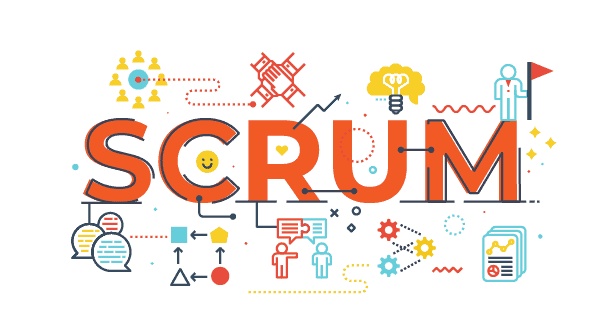In the fast-paced world of software development, agility and adaptability are key to success. Scrum methodology has emerged as a popular framework for managing complex projects and delivering high-quality software efficiently. In this article, we'll delve into the intricacies of Scrum methodology, exploring its principles, roles, ceremonies, and best practices.
What is Scrum Methodology?
Scrum is an agile project management framework that emphasizes iterative development, collaboration, and continuous improvement. Originally introduced in the early 1990s by Jeff Sutherland and Ken Schwaber, Scrum has since gained widespread adoption across various industries beyond software development.
Key Principles of Scrum:
- Empirical Process Control: Scrum is based on the principles of transparency, inspection, and adaptation. Teams rely on empirical feedback to make informed decisions and adapt their approach based on real-time feedback.
- Iterative Development: Scrum breaks down complex projects into smaller, manageable iterations called "sprints." Each sprint typically lasts 2-4 weeks and results in a potentially shippable product increment.
- Self-Organizing Teams: Scrum teams are cross-functional and self-organizing, meaning they have the autonomy to determine how best to accomplish their work. The Scrum Master facilitates collaboration and removes impediments to team progress.
- Product Backlog Prioritization: The Product Backlog is a prioritized list of features, enhancements, and bug fixes maintained by the Product Owner. Items are prioritized based on value, risk, and stakeholder feedback.
- Sprint Review and Retrospective: At the end of each sprint, the team conducts a Sprint Review to demonstrate the completed work to stakeholders and gather feedback. The team also holds a Sprint Retrospective to reflect on their process and identify areas for improvement.
Roles in Scrum:
- Product Owner: The Product Owner is responsible for representing the interests of the stakeholders and maximizing the value delivered by the team. They prioritize the Product Backlog, define acceptance criteria, and provide guidance on product features and enhancements.
- Scrum Master: The Scrum Master serves as a servant-leader for the team, facilitating collaboration, removing obstacles, and fostering a culture of continuous improvement. They coach the team on Scrum principles and practices and help ensure adherence to the Scrum framework.
- Development Team: The Development Team is a cross-functional group of individuals responsible for delivering the product increment during each sprint. They self-organize to accomplish the work and are accountable for the quality and completeness of the deliverables.
Scrum Ceremonies:
- Sprint Planning: At the beginning of each sprint, the team holds a Sprint Planning meeting to select items from the Product Backlog and define the Sprint Goal. The team collaboratively determines how they will deliver the selected items and creates a Sprint Backlog.
- Daily Scrum (Standup): The Daily Scrum is a brief, time-boxed meeting held each day to synchronize the team's activities and identify any impediments. Team members answer three questions: What did I do yesterday? What will I do today? Are there any obstacles in my way?
- Sprint Review: At the end of each sprint, the team holds a Sprint Review meeting to demonstrate the completed work to stakeholders and gather feedback. The Product Owner reviews the Product Backlog and collaborates with stakeholders to determine the next steps.
- Sprint Retrospective: Following the Sprint Review, the team holds a Sprint Retrospective meeting to reflect on their process and identify areas for improvement. The team discusses what went well, what could be improved, and creates action items to implement changes in the next sprint.
Best Practices for Implementing Scrum:
- Empower the Team: Trust the team to self-organize and make decisions about how best to accomplish their work. Provide support and guidance as needed, but avoid micromanaging.
- Prioritize Continuous Improvement: Encourage a culture of continuous improvement and learning within the team. Actively seek feedback, experiment with new approaches, and adapt based on lessons learned.
- Maintain a Transparent Workflow: Foster transparency by making project information, progress, and impediments visible to all team members. Use tools like Scrum boards, burndown charts, and task boards to track progress and identify bottlenecks.
- Collaborate Effectively: Promote collaboration and communication within the team and with stakeholders. Encourage open dialogue, active listening, and constructive feedback to foster a culture of trust and collaboration.
- Focus on Delivering Value: Keep the focus on delivering value to the customer by prioritizing features and enhancements based on their impact and importance. Regularly review and reassess priorities to ensure alignment with stakeholder needs.
Conclusion:
Scrum methodology provides a structured framework for managing complex projects and delivering high-quality software efficiently. By embracing the principles of transparency, inspection, and adaptation, teams can collaborate effectively, respond to change, and continuously deliver value to stakeholders. Whether you're new to Scrum or an experienced practitioner, understanding its key principles, roles, ceremonies, and best practices is essential for success in today's dynamic business environment.


No comments yet